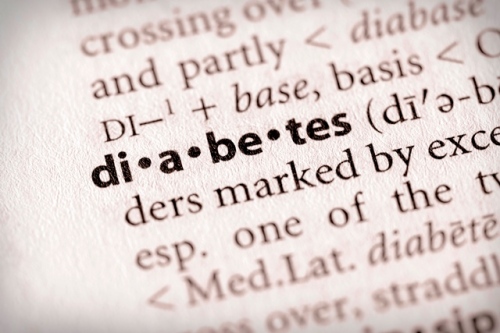What is diabetes?
Diabetes is a group of diseases marked by high levels of blood glucose resulting from defects in insulin production, insulin action, or both. Diabetes can lead to serious complications and premature death, but people with diabetes can take steps to control the disease and lower the risk of complications. Some would assert that it can even be reversed or cured.According to the National Diabetes Education Program, 25.8 million Americans have diabetes — 8.3% of the U.S. population. Of these, 7 million do not know they have the disease. In 2010, about 1.9 million people ages 20 or older were diagnosed with diabetes.
- Type 1 was previously called insulin-dependent or juvenile-onset diabetes. It accounts for approximately 5% of all diagnosed cases of diabetes in adults.
- Type 2 was previously called non-insulin-dependent or adult-onset diabetes. It accounts for 90% to 95% of all diagnosed cases of diabetes in adults. Type 2 diabetes is increasingly being diagnosed in children and adolescents.
- Gestational diabetes occurs in 2% to 10% of pregnancies. Women who have had gestational diabetes have a 35% to 60% chance of developing diabetes, mostly type 2, in the next 10 to 20 years.
Reversing Diabetes World Summit
There is an upcoming free online conference called the Reversing Diabetes World Summit, May 5 – 12, 2014. There are 50 presentations we can hear for free online. Register here and you’ll receive a free ebook when you do: Core Nutrition to Prevent and Reverse Diabetes.If you’d like to purchase the summit, they offer an opportunity to do so for less than 100.00. One can also choose a payment plan for about 30.00 each month over 3 months. I have never attended a conference that offers 50 audio and visual presentations for less than 100.00, so I consider this to be a bargain.

Dr. Thomas Cowan on Diabetes
Dr. Thomas Cowan, MD, writes about how to treat diabetes in his book The Fourfold Path to Healing, which we recommend via our Amazon affiliation. The following are paragraphs from his article published on the Weston A. Price Foundation’s website.Studies of indigenous peoples by Weston Price and many others reveal the wisdom of native diets and life-style.
For not only
did so-called primitive peoples follow the “perfect” anti-diabetes
life-style program, but their diets incorporated specific foods only
recently discovered to play an important role in the prevention and
treatment of this disease. In general, indigenous peoples had a low
carbohydrate intake coupled with a lot of physical activity. In fact,
those peoples especially prone to diabetes today, such as northern
Native Americans and Inuits, consumed virtually no carbohydrate foods.
In warmer climates, where tubers and fruits were more abundant, these
foods were usually fermented and consumed with adequate protein and fat.
It is only in the change to Western habits that their so-called
“genetic” tendency to diabetes manifests.
Dr. Cowan explains that there are three other nutritional factors in traditional diets that are helpful for diabetics.- First, the diets were rich in trace minerals. Modern science has shown us that trace mineral deficiencies–particularly deficiencies in zinc, vanadium and chromium–inhibit insulin production and absorption. Without vanadium, sugar in the blood cannot be driven into the cells and chromium is necessary for carbohydrate metabolism and the proper functioning of the insulin receptors. Zinc is a co-factor in the production of insulin. Traditional foods were grown in mineral-rich soil, contained mineral-rich bone broth and salt, and included mineral-rich water or beverages made with such water. In the modern diet, the best sources of zinc are red meats and shell fish, particularly oysters. Extra virgin unfiltered olive oil supplies vanadium, and chromium is found in nutritional yeast, molasses and organ meats like liver.
- Second, indigenous peoples ate a portion of their animal foods, such as fish, milk or meat, uncooked–either raw or fermented. This strategy conserves vitamin B6, which is easily destroyed by heat. Vitamin B6 is essential for carbohydrate metabolism; it is often the rate-limiting vitamin of the B vitamin complex because it is one of the most difficult to obtain in the diet. Indigenous peoples intuitively understood the need to eat a portion of their animal foods completely raw.
- Third, traditional peoples consumed foods rich in fat-soluble vitamins, including butterfat from grass-fed animals, organ meats, shellfish, fish liver oils and the fats of certain animals like bear and pig. High levels of vitamin A are absolutely essential for the diabetic because diabetics are unable to convert the carotenes in plant foods into true vitamin A. Vitamin A and vitamin D also protect against the complications of diabetes, such as retina and kidney problems. And vitamin D is necessary for the production of insulin.

Strictly Limit Carbohydrate Intake
Most importantly, diabetics must strictly limit their daily carbohydrate intake. While the optimum amount of carbohydrate foods depends somewhat on activity levels, most diabetics need to start on a 60-gram-per-day carbohydrate regimen until their sugars normalize. I recommend The Schwarzbein Principle as a guide to carbohydrate consumption. The book contains easy-to-use charts that allow you to assess carbohydrate values. During the initial period of treatment, which can take up to a year, average blood sugar levels should be determined by a blood test that measures HgbA1c, a compound that indicates average blood sugar levels over a period of about 6 weeks. Carbohydrate restriction will also help with weight loss.For Type II diabetics, this diet should help both blood sugar levels and weight to normalize, after which the daily carbohydrate intake can be liberalized to about 72 grams per day. This level should be maintained throughout the life of the diabetic. The same approach applies to the Type I diabetic, although it may not allow him to get off insulin. However, strict carbohydrate restriction should reduce insulin requirements, help keep blood sugar stable and, most importantly, prevent the many side effects associated with diabetes.
Please note that in this approach there are no restrictions on total food intake, nor do we pay attention to the so-called glycemic index of various carbohydrate foods. Fats consumed with any carbohydrate food will lower the glycemic index. Worrying about glycemic indices adds nothing to the therapy and only increases time spent calculating food values rather than enjoying its goodness. One should eat abundantly from good fats and proteins–only carbohydrate foods need to be restricted.”
With this approach, diabetics can expect greatly improved quality of life and even a complete cure.
Learn more during the free online conference Reversing Diabetes World Summit, May 5 – 12, 2014.
http://nourishingourselves.wordpress.com/2014/05/02/how-do-we-treat-and-even-reverse-diabetes/

Δεν υπάρχουν σχόλια:
Δημοσίευση σχολίου